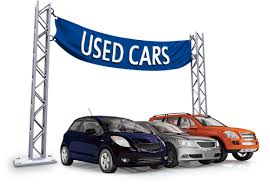Buying a pre-owned car can be a lot like diving into unknown waters – you never quite know what you’re getting into. You may get a car that’s been properly maintained by a responsible owner or you may get one that belonged to an overzealous teenager. The good news is that buying a used vehicle is less of a gamble than it once was. Detailed information is available about every vehicle through CARFAX and onboard diagnostics can allow technicians to get an idea of what (if anything) is wrong with the engine. An inspection by a knowledgeable mechanic is always wise, but there are some things that you can do right on the car lot that will give you an idea of what you’re getting into.
Lay your Head on a Fender and Look down the Vehicle’s Side with One Eye
What you should look for are irregularities or ripples in the metal. This may indicate body work done after a collision. Also be on the lookout for paint that doesn’t match or has a dimpled texture like an orange peel.
Closely Examine the Upholstery, Carpet, and Pedals
How good or bad these things look are a good indication of how well a car has been cared for. Most car dealers detail their vehicles before putting them on the market, but cleaning will only remove some of the tell-tale signs. Lift floor mats, look in cargo areas, and fold down the seats if possible. These are areas that will show the true state of a vehicle.
Take a Look Under the Hood
Pop the hood and take a close look at the engine itself. Look for leaks around gaskets and hose fittings as well as on the engine block itself. Start the car if you are able and smell for anything strange such as burning oil, antifreeze, or transmission fluid. Each of these fluids has a very distinctive smell. With the car in park, check the transmission fluid levels. The fluid should be a magenta color and have a faintly sweet smell. Dark colored fluid or fluid that smells like burnt toast could mean that the transmission is poorly maintained, has been overheated, or operated with low fluid level.
Test Drive the Vehicle
This is perhaps the most important test of all. Listen closely to the engine when you accelerate. You should also listen for thumps or clunks when going over bumps. Take it out on the highway and get a feel for how it handles. If it pulls to one side or the steering wheel doesn’t center itself, it could have front end issues. Accelerate sharply while listening for any strange noises. Does the vehicle run smoothly and have adequate power on the highway? Hit the brakes sharply. Pay attention to whether the vehicle pulls to one side or the other, whether any wheels lock up, and whether there is any vibration in the brake pedal.
These steps don’t take the place of a detailed inspection, but they can give you an idea as to whether or not the car is worth paying for a closer inspection before you buy.
